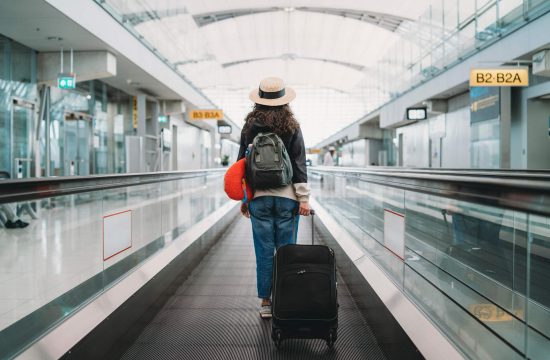Booking international flights can be a complex and overwhelming process, especially if you’re unfamiliar with the nuances of global travel. From understanding visa requirements to navigating time zones and layovers, there are many factors to consider. This comprehensive guide will equip you with essential tips and strategies to make your international flight booking experience smooth and hassle-free.
Research Your Destination
- Visa Requirements: One of the first steps in planning an international trip is to research the visa requirements for your destination. Some countries offer visa-free entry or visa-on-arrival for certain nationalities, while others require a visa application in advance. Ensure you have all the necessary documentation before booking your flight.
- Entry Restrictions and Travel Advisories: Stay informed about any entry restrictions, health regulations, or travel advisories issued by your destination country. These can change frequently, especially in response to global events such as pandemics or political unrest.
Example: Before booking a flight to China, check if you need a visa and if there are any current travel advisories or health regulations you need to comply with.
Choose the Right Time to Book
- Optimal Booking Window: For international flights, it’s generally advisable to book 3-6 months in advance. This window often provides a balance between fare availability and pricing, helping you secure the best deals without paying last-minute premiums.
- Seasonal Considerations: Consider the peak and off-peak travel seasons for your destination. Traveling during off-peak times can result in lower fares and fewer crowds, enhancing your overall travel experience.

Example: Booking a flight to Europe in the fall or spring can be more affordable and less crowded compared to the summer high season.
Compare Airlines and Routes
- Direct vs. Connecting Flights: Direct flights are more convenient but can be more expensive. Connecting flights often offer lower fares but require layovers, which can add travel time. Weigh the pros and cons based on your preferences and budget.
- Alternative Routes: Explore alternative routes and nearby airports that might offer better deals. Sometimes flying into a neighboring country and then taking a regional flight can save money.
Example: Instead of booking a direct flight to Tokyo, consider flying into Seoul and taking a short regional flight to Tokyo. This can sometimes result in significant savings.
Utilize Flight Comparison Tools
- Online Travel Agencies (OTAs): Use OTAs like Expedia, Skyscanner, and Google Flights to compare fares from multiple airlines. These platforms provide a comprehensive view of available options, allowing you to choose the best route and price.
- Fare Alerts and Price Tracking: Set up fare alerts on these platforms to receive notifications when prices drop for your desired route. This helps you stay informed and book when the fare is most favorable.
Example: Setting a fare alert for a flight from New York to London can help you monitor price fluctuations and book when fares are at their lowest.
Understand Baggage Policies
- Checked and Carry-On Baggage: Different airlines have varying baggage policies, especially for international flights. Be sure to check the baggage allowances and fees for your chosen airline to avoid unexpected costs.
- Weight and Size Restrictions: Familiarize yourself with the weight and size restrictions for both checked and carry-on baggage. This ensures you pack appropriately and avoid additional fees at the airport.

Example: If you’re flying with a budget airline like Ryanair, be aware of their strict baggage policies and consider purchasing additional baggage allowance if needed.
Plan for Layovers and Transit
- Layover Duration: If your flight involves layovers, ensure you have sufficient time to clear customs, collect baggage, and reach your connecting flight. A layover of at least 2-3 hours is generally recommended for international connections.
- Transit Visas: Some countries require transit visas for passengers with layovers, even if you don’t plan to leave the airport. Check the transit visa requirements for your connecting countries before booking.
Example: If you have a layover in Dubai on your way to Australia, ensure you have enough time for transit and check if a transit visa is required for your nationality.
Consider Travel Insurance
- Coverage Options: Travel insurance can protect you against unforeseen events such as flight cancellations, delays, lost baggage, and medical emergencies. Choose a policy that offers comprehensive coverage for your international trip.
- Medical Coverage: Ensure your travel insurance includes medical coverage, especially if you’re traveling to a country with high healthcare costs. This provides peace of mind in case of illness or injury abroad.
Example: Purchasing travel insurance with medical coverage is essential when traveling to countries like the United States, where healthcare costs can be exorbitant.
Utilize Loyalty Programs and Points
- Frequent Flyer Programs: Join frequent flyer programs to earn miles or points on your flights. Accumulated miles can be redeemed for free flights, upgrades, or other travel benefits.
- Credit Card Rewards: Many travel credit cards offer points or cashback that can be used towards flight bookings. Using these rewards can significantly reduce the cost of your international flights.
Example: Redeeming frequent flyer miles for a business class upgrade on a long-haul flight can enhance your travel experience without incurring additional costs.
Prepare for Customs and Immigration
- Required Documents: Ensure you have all necessary documents for customs and immigration, including your passport, visa, and any required health certificates. Keep these documents easily accessible during your journey.
- Customs Declarations: Familiarize yourself with the customs regulations of your destination country. Declare any restricted or prohibited items to avoid fines or confiscation.

Example: When traveling to Australia, declare any food items, plants, or animal products to comply with their strict biosecurity regulations.
Manage Time Zones and Jet Lag
- Time Zone Adjustments: Adjusting to different time zones can be challenging, especially on long-haul flights. Gradually shifting your sleep schedule a few days before departure can help mitigate jet lag.
- In-Flight Tips: Stay hydrated, avoid excessive caffeine and alcohol, and try to sleep according to your destination’s time zone. This helps your body adjust more quickly upon arrival.
Example: If you’re flying from New York to Tokyo, try to adjust your sleep schedule a few days before departure to minimize the impact of the 13-hour time difference.
Use Incognito Mode and Clear Cookies
- Incognito Browsing: Flight prices can increase based on your search history. Using incognito mode or private browsing helps prevent price hikes caused by repeated searches for the same route.
- Clear Cookies: Clearing your browser cookies can also help you see fresh, unbiased prices when searching for flights.
Example: Searching for flights from Los Angeles to Paris in incognito mode might reveal lower prices compared to regular browsing where prices may have been inflated due to repeated searches.
Monitor Fare Trends and Emerging Tools
- Fare Prediction Tools: Use fare prediction tools like Hopper, which analyze historical data to predict future price trends. These tools can advise you on the best time to book based on price trends and forecasts.
- Emerging Technologies: Stay informed about new booking tools and technologies that offer innovative ways to find and book flights. These tools can provide additional options for securing great deals.
Example: Fare prediction tools might suggest booking a flight from London to Bangkok in the next few weeks for the lowest price based on historical data.
Common Mistakes to Avoid
- Ignoring Additional Fees: Budget airlines often advertise low base fares but charge extra for checked baggage, carry-ons, and seat selection. Be aware of all potential fees to avoid surprises and ensure you’re getting the best overall deal.
- Last-Minute Bookings: While last-minute deals can occasionally be found, they are often more expensive and offer fewer options. Booking in advance generally provides better prices and more choices.
- Overlooking Travel Insurance: Although not directly related to finding cheap flights, travel insurance can save you money if your plans change or if unexpected issues arise. Consider purchasing insurance to protect your investment.
Example: Booking a flight from Miami to Rio de Janeiro last minute might result in higher prices and limited availability compared to booking several months in advance.
Understanding Airline Alliances and Codeshares
- Airline Alliances: Major airlines often form alliances to offer a broader network of flights and shared benefits. Understanding these alliances can help you access better flight options and benefits.
- Codeshare Flights: Codeshares allow multiple airlines to share the same flight. Booking a codeshare flight can sometimes offer lower fares and more flexibility.
Example: Booking a codeshare flight operated by a partner airline within the same alliance can sometimes be cheaper and offer additional perks.
Utilizing Stopovers and Layovers
- Free Stopovers: Some airlines offer free stopovers in their hub cities. This allows you to explore an additional destination without extra cost. Look for stopover programs when booking your flight.
- Long Layovers: While long layovers can be inconvenient, they can also offer significant savings. Consider flights with longer layovers if they drastically reduce your airfare.
Example: Booking a flight from New York to Singapore with a free stopover in Istanbul can allow you to explore two cities for the price of one.
Exploring Different Booking Channels
- Online Travel Agencies (OTAs): OTAs like Expedia, Orbitz, and Priceline often offer competitive prices and package deals. Compare prices on these platforms with those on the airline’s website.
- Direct Booking: Sometimes booking directly with the airline can offer perks like better customer service, the ability to earn miles, and easier changes or cancellations.
Example: Comparing prices on an OTA and the airline’s official website can reveal differences in fare, perks, and conditions.
Maximizing Seasonal Sales and Promotions
- Seasonal Sales: Airlines often run sales during specific times of the year, such as Black Friday, Cyber Monday, and end-of-season sales. Keep an eye on these promotions for significant savings.
- Email Subscriptions: Sign up for airline newsletters and deal alert services to stay informed about upcoming sales and promotions.

Example: Booking a flight during an airline’s summer sale can offer significant discounts compared to regular prices.
Engaging with Travel Communities and Forums
- Online Forums: Join travel forums and communities like Flyertalk, Reddit’s r/travel. These platforms offer valuable insights, tips, and shared experiences from fellow travelers.
- Social Media: Follow airlines and travel influencers on social media for real-time updates on deals, promotions, and travel tips.
Example: Engaging with a travel community might reveal a hidden gem airline or route that offers exceptional value.
Conclusion
Navigating international flight bookings can seem daunting, but with the right strategies and tools, you can make the process much smoother and more cost-effective. By researching your destination, choosing the right time to book, comparing airlines and routes, and utilizing travel tools and communities, you’ll be well-equipped to secure the best deals and enjoy a hassle-free journey. Safe travels with Travel Touriz!





